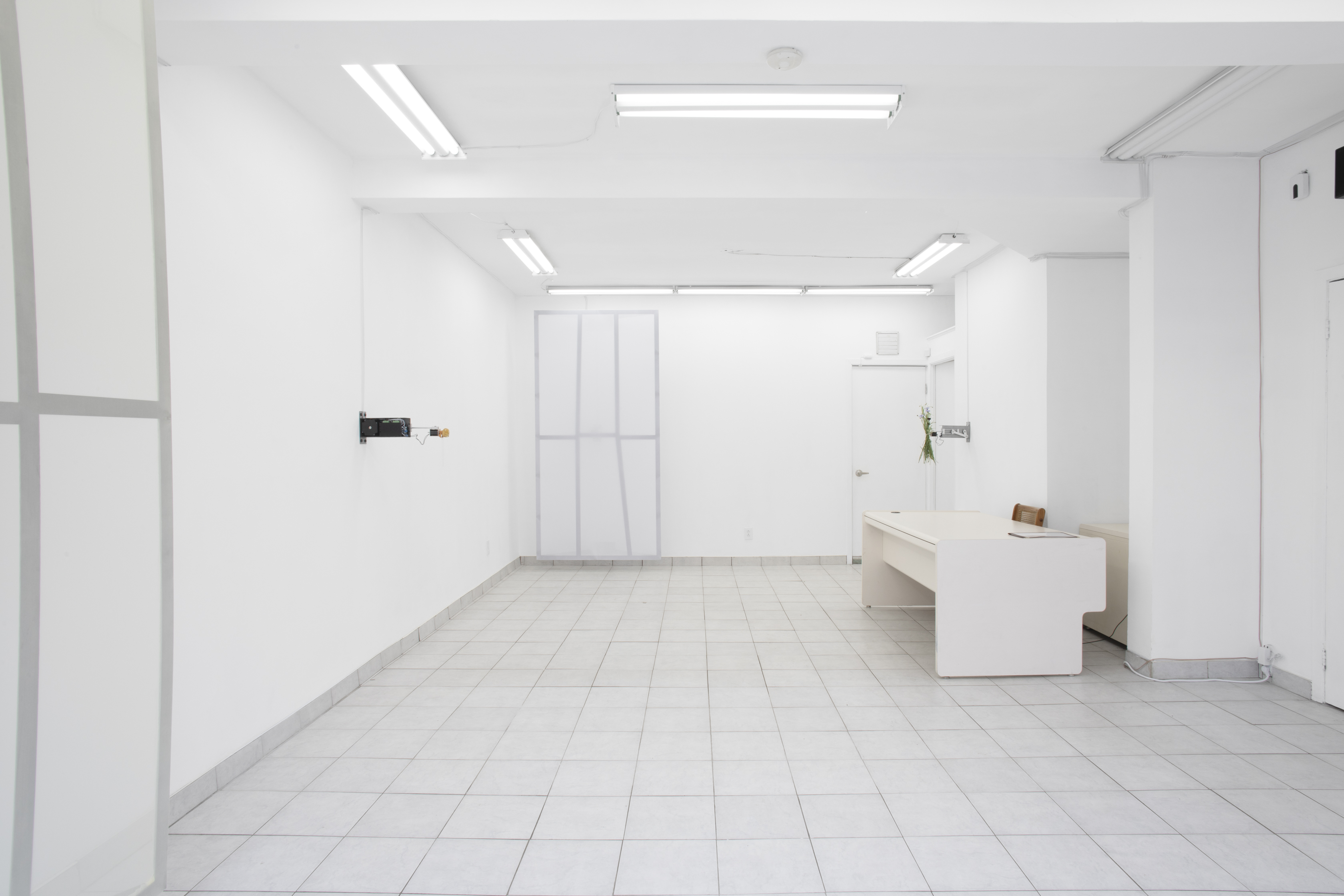Pleasure exists beyond language or categorization. Nascent desires may be pushed aside by age; by shame; by the codes of conduct in which our guttural instincts are sublimated into “acceptable” social traits. In Pansy Tone, Robert O’Halloran reminds us that these pleasures are not lost as he animates crass materiality through canny disruption of the pristine and aseptic.
O’Halloran turns the body’s boundaries translucent, sensually communicating with other phenomena beyond it. They call into question the defining characteristics of human life (the edges of the body, the self, architecture, and language) through erotic and emotional experience. He imbues the gallery with a soundscape of the unavoidable prose of the body; a composition orchestrated with coughs, phlegm, snarls, gulps, cackles, and wails. She uses “ick” as his instrument, constructing a language of intimacy. Ick is ultimately where we emerge — it is in the material acts and eliminations of the body that we are humanized. With this, O’Halloran produces a vibrational presence, guttural sounds that remind us of the limitless potential of the body, a resistance to architecture’s state of order.
The artist develops an external envelope that undulates in response to key moments of their peculiar orchestra. The sculptural walls of the gallery billow and surge in conjunction with the percussive corporeal composition. In manipulating the form of the gallery, he offers us new resources that map a generative relationship between our inner and outer worlds — how ick transgresses order — in a loop of what is and what was, toward what could be. By allowing themself (and by way, the viewer) to meander between entrails and architecture, O’Halloran reminds us that our unruly bodily pleasures need not always be concealed. To haunt ‘normality,’ we must spill our guts.
– Erin Reznick
1 Mikhail Bakhtin, Rabelais and His World, trans. Heléne Iswolsky (Bloomington, IN: Indiana University Press, 1984), p. 336.
Robert Anthony O’Halloran lives and works in Toronto, Ontario. Recent solo exhibitions include The Table, 2021; Sibling, 2020; Bunker 2, 2017 (all Toronto); as well as group exhibitions at Arsenal Contemporary Art, Toronto, 2020; The Plumb, Toronto, 2021; and Art POP (curated by Celine Bureau), 2021, Montréal. Recent publications include Phile Magazine, the internationally recognized journal for desire and curiosity.














